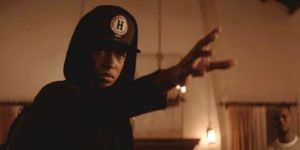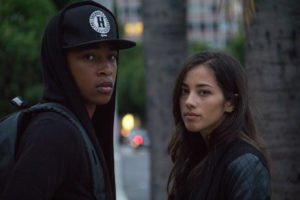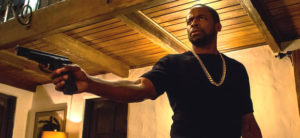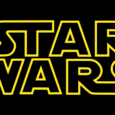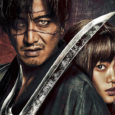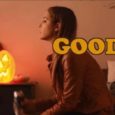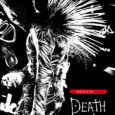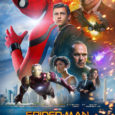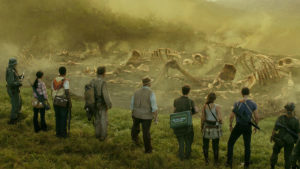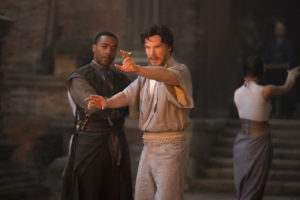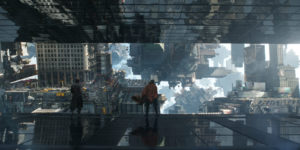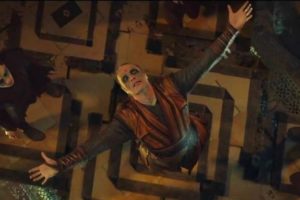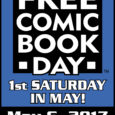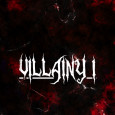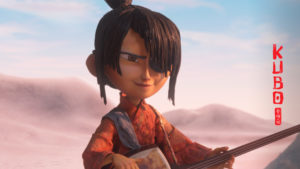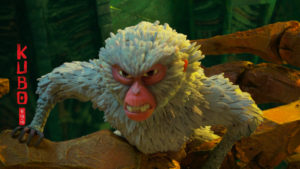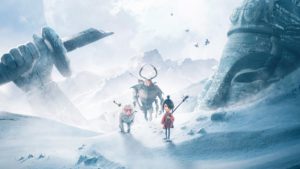Sleight is one of those movies that almost flew completely under my radar. Despite premiering at Sundance in 2016, I hadn’t heard of it until a tweet showed up in my Twitter timeline. I forget its contents now but the retweeter, Dulé Hill of Psych fame, was promoting the film. Which makes sense considering he’s one of its stars. As a fan of Hill, my interest was piqued.
The movie focuses on Bo, relative newcomer Jacob Latimore, a brilliant kid with a penchant for science. He was forced to drop out of school after his mother died to take care of his younger sister, Tina (Storm Reid). During the day, Bo works as a street magician, performing simple card tricks and levitating items for tourists in the busy parts of LA. But at night he hustles drugs for a local kingpin, Angelo (Hill).
For the most part, his life is going well. His bills are paid, his sister is doing well in school. He even meets a girl, Holly (Seychelle Gabriel). But when Angelo asks him for a “favor,” his golden life starts to tarnish, and he sees that the man he’s working for is not the friend he thought he once was.
Directed and co-written by J.D. Dillard, Sleight really delves into the character of Bo, working hard to make sure the audience really understands what he’s going through. Unfortunately, it does this to the detriment of the rest of the cast. We get a small look into Holly’s home life, with lines that quickly explain away why she’s not as happy as she should be. Antagonist Angelo is a trope-fueled gangster; we never learn why he’s as sadistic as he is, but it turns out it’s never important to the plot. All that matters is that he put Bo in a certain position and all we are supposed to care about is how he’s going to get out of it.
Sleight does do something very right, and that’s the aspect of Bo’s “magic.” We see early on that things may not be what they seem and as the film progresses, our suspicions are confirmed. However, we spend so much time wondering just what is happening that by the time everything comes to a head, the finale seems anti-climactic. Everything that the movie worked up to, the final confrontation that I was looking forward to, was over in five minutes, leaving me with a “that’s it?’ feeling.
The film’s marketing is my biggest gripe with Sleight. The movie billed itself as a super hero film (it was referred to as “Chronicle meets Iron Man”) but it never actually feels that way. Sure, it contains a few elements of super heroism, like the source of Bo’s mysterious “powers.” But at its core it’s a character study. It’s a tale of revenge and redemption. We see a smart kid like Bo get stuck in a harrowing situation due to factors outside of his control, forcing him to do something stupid to try and pull himself out, only to get mired deeper into it. Yes, Bo can do some amazing things but that doesn’t make him a super hero and billing him as such denigrates the achievements of his character.
All that aside, Sleight is a beautifully directed film. Dillard uses natural light as often as possible, probably as a way to keep the production budget down but he does so in a way that makes the film more interesting to watch. Even his framing of characters in certain scenes added life to otherwise static moments; talking heads aren’t very interesting but if they’re shot from the right angle, we can be enraptured.
The acting in Sleight deserves a nod as well. Latimore was perfect in the role of Bo, coming off as cocky in his magic scenes but then awkward and unsure when he’s with Angelo or Holly. Seychelle Gabriel was also a joy to watch; Holly’s backstory didn’t lend much depth to the character but Gabriel manages to keep her interesting, mostly through Holly’s rapport with Bo. It’s a shame Holly was only used as a crutch for Bo. I would have liked to have dived deeper into her character.
Dulé Hill was one of the oddest characters to see in this film. As an actor who generally only plays nice guys, like Gus in the aforementioned Psych, seeing him as the tough-as-nails, sadistic drug czar was certainly a change of pace. At times, it even seemed awkward to hear him drop F-bombs and get physical with other characters. Unfortunately, Hill’s portrayal of Angelo felt a little stilted, like he was trying to make the character his own instead of drawing upon inspiration from other badass drug dealers in early cinema. Which is fine, but when every other aspect of the character is derivative of a hundred other films out there, it doesn’t jibe too well. That said, Hill did well with what he was given.
I’m happy that I saw Sleight early in its release and I do give it credit for what it was trying to do. However, having one interesting character in a cast of overused clichés doesn’t make for a very compelling film. Pair that with marketing that doesn’t wholly apply and you have a recipe for a movie that is bound to disappoint some people. Despite all of that, the character of Bo make it an interesting film, one that I would recommend if you have some free time.
Grade: B-
If a tree falls in a forest, and a mythological gigantic ape picks it up to use it as a weapon, does it make a sound? Yes, that sound is me in the theater audibly uttering “wow” through a giddy smile. This is the true test Kong: Skull Island has to pass or fail. Could it not only entertain but “wow” audiences with its spectacle? Fortunately, it unquestionably amazes with its stunningly-crafted CG and scale, but it’s at the expense of smooth dialogue and strong characters.
In the latest Kong retelling, the story is as thin as you’d expect, since the emphasis is on the origins of these monsters. As the Vietnam war comes to an end, a group of determined scientists implores the government to send a military escort with them to an undiscovered island. Along the way, said scientists hire a tracker (Tom Hiddleston). Separately, a photographer tags along (Brie Larson). The plot broken down in a sentence is essentially “some dummies go to Kong’s island to study things.” I’m never a fan of being reductive, but a film isn’t supposed to make it so easy to do. Regardless, I suppose that’s not why we eagerly watch these types of popcorn blockbusters.
Commendably, Warner Bros. Pictures employs one of the strongest ensemble casts you’ll see in a movie all year. Hiddleston, recent Oscar winner Larson, Samuel L. Jackson, John Goodman, John C. Reilly, Toby Kebbell, Shea Whigham, Thomas Mann, and Jing Tian star, to name a few. The film also features a Straight Outta Compton reunion with cast members Jason Mitchell (Easy E) and Corey Hawkins (Dr. Dre). The casting aspect alone held so much promise on paper, but this potential felt largely squandered.
Sam Jackson and John C. Reilly are clearly taking liberties and enjoying it in their respective roles, but everyone else is strikingly forgettable. There’s attempted interplay between a couple of the marines that ultimately falls flat. Heavy-hitting actors Hiddleston and Larson are simply present to be a conduit of plot details for us, the audience. Most of what they do while on camera is react with the best surprised expression they can muster. Sure, the two have distinct occupations but it’s merely an excuse to carry them into this dangerous adventure. Not to mention, Hiddleston’s James Conrad did very little tracking at all. As far as definitive personality traits, I didn’t notice any from Hiddleston, Larson, or the many other expendable individuals.
As I touched on, Reilly and Jackson are a blast to watch as they chew up their scenery. Whether improvised or purposefully written, the jokes never seem to land pre-Reilly. Like he does in his prior comedic work, he has a natural delivery and general presence that inspires laughter. Jackson as Colonel Packard recited some insane lines in the vein of a cheesy ’90s action villain with such hilarious conviction. The duo was nothing short of a joy to see perform.
We have to praise the real star of the show: Kong. Everything about him in Skull Island exceeded my expectations. If your primary complaint of 2014’s Godzilla was “where’d that enlarged lizard thing go?,” prepare to be satisfied. Kong appears in the first 3 minutes, and they don’t hold back as a means to build tension (which I personally appreciated in the latest Godzilla effort). At times, he’s spotted merely walking around the island, and every frame he occupies feels majestic. Terry Notary put forth a tremendous motion-capture effort that added a surprising amount of nuanced personality to the familiar beast. More than that, Kong is written with a layer of ingenuity. In his several oversized-creature battles, he uses his surroundings and tools he might spot at random to their full potential to aid him in bringing down his enemies. Kong himself should satisfy the majority of moviegoers.
Another facet I appreciated from the picture was director Jordan Vogt-Roberts‘ work behind the camera. There are plenty of carefully constructed frames with a remarkable colorful concoctions. After the movie rushes past certain crudely-written scenes with one-dimensional supporting characters, Vogt-Roberts squeezes in intricately vibrant set pieces. Whether it’s a fast-paced action sequence involving an abundance of fire or Kong purely looking at a sunrise, he shows off his knack for capturing the beautiful production design in a visually-palpable way. Unfortunately, he’s not given many opportunities to display these skills on more than a couple occasions.
I may have levied quite a few criticisms against this flick. Nevertheless, a visit to the theater to see Kong: Skull Island on the silver screen is a good investment. If you expected occasional astounding visuals and fantastic monster fights, then Skull Island will distribute that in spades. Anticipating tangible character development and dialogue that doesn’t make you cringe is simply too much to ask. While we always prefer a satisfying mixture of both, Kong is still an enjoyable (literal) giant blockbuster. Also, don’t forget to remain seated for a post-credits tease. You’ll start to see how the larger Warner Bros. MonsterVerse starts to connect, and it’s very exciting.
Grade: C
It’s unfortunate that we rarely receive honest, hilarious, relatable coming-of-age films nowadays. Luckily, when films like The Edge of Seventeen come along, they get the deserved attention. Seventeen has a familiar premise, but thanks to writer/director Kelly Fremon Craig‘s perspective, it conversely has a fresh approach. Because of the strong writing and performances, Seventeen lives in a class among the best like Mean Girls, Clueless, and Easy A.
To summarize, The Edge of Seventeen follows awkward high school student Nadine (Hailee Steinfeld) as she tries to create a social life for herself. Her best friend Krista (Haley Lu Richardson) starts dating her older brother (Blake Jenner), which drives a rift between the three. In the interim, Nadine befriends a more-awkward, show-stealing kid named Erwin (Hayden Szeto). She also seeks occasional advice from unconventional, crass teacher Mr. Bruner (Woody Harrelson).
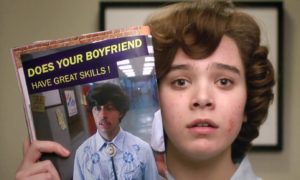 As you read through my synopsis, you should recognize certain plot aspects. We’ve seen an uncomfortable teenager flounder through adolescence on film before. The witty, sometimes-rude teacher isn’t a new idea. The unassuming romance is definitely a trope in teen movies. However, the originality in dialogue and unique traits Nadine, Erwin, and Mr. Bruner possess elevate the film.
As you read through my synopsis, you should recognize certain plot aspects. We’ve seen an uncomfortable teenager flounder through adolescence on film before. The witty, sometimes-rude teacher isn’t a new idea. The unassuming romance is definitely a trope in teen movies. However, the originality in dialogue and unique traits Nadine, Erwin, and Mr. Bruner possess elevate the film.
To obtain some appreciation for The Edge of Seventeen, I implore you to watch the hilarious red band trailer above. The charming, vulgar humor is immediately apparent and appreciated. This isn’t just true for the trailer, but for the entire feature. In the vein of Superbad, kids curse, and curse often in reality, but in Seventeen, conversations feel more realistic. Instead of aiming for the best gut-busting one-liner, the comedy flick opts for believability in its word choices.
Although the laughs are plentiful at the start, the final third act attempts to be poignant. While Nadine’s arc feels fulfilling, the resolution feels rather predictable and sudden. If you’ve seen one teen movie and watch The Edge of Seventeen trailer, you can guess the film’s ending easily. However, I feel the writing short-changes a particular character on closure that the audience would have welcomed. Regardless, the first two-thirds of the movie balance witty humor and character depth to cover for any finale weaknesses.
Backtracking to the performances, The Edge of Seventeen can certainly brag about its central cast. Hailee Steinfeld’s effortless skills would take years for any other actor to master. Woody Harrelson is impeccably utilized as the charismatic, sometimes-crude teacher. The star-making performance ultimately belongs to Hayden Szeto as Erwin Kim. He’s a love interest unlike any other in the teen comedy/coming-of-age genre. He acts so convincingly uncomfortable in his own body when trying to speak to Nadine. In every nervous twitch and stutter, I saw so much of my adolescent self in Erwin Kim. That earns the timid kid a spot as one of my favorite teen comedy characters to ever exist.
 While the central cast’s performances are a bright enough highlight to drown out any criticisms, said criticisms still remain among the supporting cast. Kyra Sedgwick as Nadine’s eccentric mother, Mona, feels slightly mishandled. I’m unsure how the regular moviegoing audience will feel, but I yearned for more meaningful interactions between Nadine and Mona. Also, unfortunately Blake Jenner as Nadine’s older brother Darian simply couldn’t measure up to Hailee’s acting prowess when necessary. Haley Lu Richardson as Nadine’s best friend Krista eventually became moving background furniture after the first half of the movie. At times, I needed reminding that Nadine and Krista were even best friends.
While the central cast’s performances are a bright enough highlight to drown out any criticisms, said criticisms still remain among the supporting cast. Kyra Sedgwick as Nadine’s eccentric mother, Mona, feels slightly mishandled. I’m unsure how the regular moviegoing audience will feel, but I yearned for more meaningful interactions between Nadine and Mona. Also, unfortunately Blake Jenner as Nadine’s older brother Darian simply couldn’t measure up to Hailee’s acting prowess when necessary. Haley Lu Richardson as Nadine’s best friend Krista eventually became moving background furniture after the first half of the movie. At times, I needed reminding that Nadine and Krista were even best friends.
While the supporting performances felt shallow for me, most of that fell on the writing of those characters instead of the actors themselves. The Edge of Seventeen definitely shows Kelly Fremon Craig’s endless potential as a writer, producer, and director, even if some areas could use improvement. Nonetheless, where Seventeen thrives is Craig’s grasp on the principal characters’ identities, the comedic timing, and the fluid pacing. Objections aside, the great outweighs the mediocre or questionable, which can 100% be attributed to Craig’s work.
Speaking overall, if you want a memorable cinematic experience to Mean Girls or Easy A (but R-rated), The Edge of Seventeen is absolutely for you. Prepare yourself for more gravitas behind its emotional moments than most of your standard teen comedies. What you’ll remember most though is the unique, charming, and relatable characters, and the unexpected laughs they bring.
Grade: B
The first trailer guarantees that Doctor Strange will be visually and cinematically unlike any other Marvel movie. You sense that Marvel Studios‘ latest will give basically Inception on steroids. While Strange‘s unique architecture was never in doubt, “will it have the typical Marvel charm?” was the question on everyone’s lips. Fortunately, likely thanks to renowned comedy writer Dan Harmon‘s rewrites, the most recent Marvel Cinematic Universe entry delivers in almost every regard.
We’ll definitely arrive at why I said “almost,” but first, many movie-only fans likely need some background. Doctor Strange follows the appropriately-named Dr. Steven Strange, a very stubborn, hot-shot neurosurgeon. He’s not a very likable or charming individual; traits that leading man Benedict Cumberbatch has fun with on-screen. However, as with most every origin story, his fortunes don’t last after a devastating car accident badly damages his skilled hands.
Desperate to reattain his status for his damaged ego’s sake, he treks out to a temple in Nepal to learn the mystical arts. As expected, the pompous Strange laughs off the very idea of “magic,” but the Ancient One quickly resolves his skepticism, otherwise, there wouldn’t be much of a movie. As Strange hones his otherworldly skills, he discovers the massive responsibility his newfound friends carry on their shoulders. This leads Strange to an intriguing moral dilemma of choosing to fight for others or only himself.
As with all reviews, I aim to remain spoiler-free. Unfortunately, many things I adore from Doctor Strange involve spoilers, but I’ll tread carefully. Firstly, director Scott Derrickson and the writers utilize the cast to perfection. Cumberbatch carries the film effortlessly, but you also have supporting players turning in memorable performances. Understandable controversies aside, Tilda Swinton brings an elegance, mystique, and toughness as the Ancient One. Chiwetel Ejiofor surprises as Karl Mordo with a few impassioned speeches. Benedict Wong shines as the hilariously stone-faced (and coincidentally-named) Wong. Although not exploited to her full potential, Rachel McAdams as Christine Palmer is a fantastic addition as well.
To accompany the acting gravitas, Derrickson constructs the most impressive, innovative visuals from any Marvel title on any medium. The thrilling opening sequence whets the appetite, and the movie efficiently builds upon that. We’re shown a psychedelic sequence that could be this generation’s 2001: A Space Odyssey stargate scene. As seen in the trailers, there’s also a mind-bending foot chase where buildings and roads are upside down or sideways or inside each other. With the mystical rules having been thoroughly explained throughout the film, these set pieces are immensely gratifying.
As for these aforementioned “rules” of Doctor Strange‘s universe, I truly appreciated how fresh Marvel’s introduction to magic felt. You’ll see lived-in dimensions, ancient artifacts with a rich history, and an expansive library. There may be times where the audience will want to ask the movie to “slow down.” The filmmaker throws a potential overload of information at you. However, hearing the Ancient One’s musings such as “not everything makes sense; not everything has to,” the film successfully reminds you to turn off your brain, forget about the science behind the magic, and enjoy the ride.
Now I disclose why I earlier claimed Doctor Strange to “almost” deliver in every regard. Unfortunately, the Marvel villain conundrum continues. Mads Mikkelsen plays Kaecilius, and turns in a portrayal that’s nothing or less than “fine.” The most frustrating part is his lack of clear motivations. He monologues to Strange about his devious intentions (which don’t really seem that devious), but the “why” is entirely avoided. There are effective efforts to tease future villains that do have more depth, but it’s at the sacrifice of the current villain’s arc.
Also, I’ve spotted a few articles mentioning how Marvel movies not named The Avengers have forgettable musical scores. After hearing the Michael Giacchino presided over the musical arrangement, I was ready to lay those sentiments to rest. I gained confidence after listening to the end credits music released a few weeks ago. Yet throughout the film, I didn’t even notice the music as anything more than ambient noise. Yes, you don’t want the melodies to distract from the motion picture, but the musician in me clamored for something of literal and figurative note.
Luckily, none of these criticisms ruined how tremendous Doctor Strange was as a whole. I’ll never forget feeling that ultimate high after leaving the theater, having seen Marvel’s most inventive, creative entry yet. There are enough Easter eggs and name-drops peppered throughout to justify revisiting the movie often. As a bonus, this movie’s mid and end credits scenes possess heavy implications to Marvel’s future titles too. Most importantly, Strange has the familiar well-timed humor and joyous fun you’re looking for. The Doctor is in.
Grade: B+
Even before its release, Kubo and the Two Strings was a special movie. Laika Entertainment, who previously delivered films ParaNorman, Coraline, and The Boxtrolls, earned every iota of anticipation. Consistently positive receptions from critics and moviegoers alike act as the evidence. Additionally, those 3 aforementioned projects were nominated for the Best Animated Feature Academy Award in their respective years. Knowing Laika’s visual and storytelling prowess, Kubo logically became a must-see summer 2016 movie for me.
Unlike other kids in his village, Kubo (voiced by Art Parkinson) is a youthful one-eyed street-performing storyteller. He uses magic to manipulate paper into a variety of moving origami shapes while reciting samurai adventures. Before night falls, Kubo journeys back home to care for his ill mother, using his busking money to pay for their nourishment. Kubo yearns for adventure outside of his stories, but accepts the importance of his responsibility to his mother.
One evening, Kubo mistakenly stays out too late, and two supernatural, terrifying-looking sisters (voiced by Rooney Mara) confront him. These sisters work for our main villain, the Moon King (voiced by Ralph Fiennes). The King stakes some sort of claim on Kubo since our protagonist’s birth. Forced out of his village for his own safety, Kubo starts a road trip to collect artifacts that can protect him from the King. Along the way, new friends Monkey (voiced by Charlize Theron) and Beetle (voiced by Matthew McConaughey, for some reason) join our hero in his quest.
Expanding on those characters, Matthew McConaughey gives a voice acting performance to a samurai Beetle. To me, the Texan twang and charm is an odd choice for a samurai of any species. However, I’m more than willing to overlook it considering what works in the movie’s favor. An example is Charlize Theron, who brings much of the picture’s humor with her deadpan delivery as the character Monkey. Furthermore, Kubo, Monkey, and Beetle display strong chemistry throughout, which can be credited to the writing as much as the voice acting.
The writing also pays tribute to Japanese folklore, which is retold in fresh ways here. I’m certainly not educated enough on said folklore to validate what’s true or not, but it’s definitely compelling. Moreover, the writers authored wholly fulfilling character arcs. The Monkey’s true intentions unravel in gratifying ways. The Beetle finds the sense of purpose he’d once lost. Kubo’s quest includes an emotional side dealing with bravery in the face of grief. Tears in your eyes are a near-guarantee as the end-credits roll.
Kubo and the Two Strings shines with not only its completely unique story, but its visuals. Laika and director Travis Knight designed each environment and character so meticulously. Whether an underwater sequence or an ancient samurai temple, it’s all carefully hand-crafted. Laika has an innate ability to convey human emotion using otherwise lifeless objects. The action scenes are no exception. In Kubo, you’ll find some of 2016’s best designed action in a movie, animated or not.
Another commendable aspect of Kubo and the Two Strings is its use of its music. As expected, the melodies contain a Japanese influence, and it’s well-blended. More compelling is the structure of the score. During the epic battle sequences in the 3rd act, the composition’s rise and fall aids in immersing you completely into this movie.
All in all, Kubo and the Two Strings is a near-perfect movie-going experience. The thrills, story, emotional weight, and amazing visuals balance each other effectively, making Kubo a filmic rarity in 2016. Laika continues to make a name for themselves in the world of animation, but they’re still clamoring for bigger audiences. Perhaps the specific animation style or the deeper stories prevent Laika’s movies from becoming box office phenomenons. Nonetheless, in the same year as Finding Dory and Secret Life of Pets, Kubo is not only the best animated cinematic offerings of the year so far, but one of 2016’s best films – period.
Grade: A-
Marvel films are an interesting phenomenon I enjoy taking apart and looking at closer. Many people may say “This is fun, this movie is not supposed to be a paragon of progress, it’s a summer blockbuster! Why are you so critical?!” and to that I say “Why not?” We as a nation feed off of the images we are given and I think we deserve great work. I loved Captain America. The original Avengers was fun enough. Winter Soldier is a totally different beast but boasts some of the most solid work Marvel’s done yet. How does Avengers: Age of Ultron fare?
First, it must be said upfront that opinions on Joss Whedon as a writer and as a director right now especially in regards to Black Widow (Scarlett Johansson) are obviously a hot topic and hard to avoid. I have my opinions. I’ve seen a bulk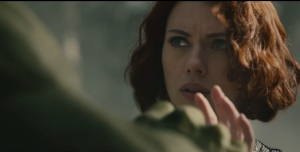 of his body of work. Binge watching Dollhouse does things to you. And yes, Age of Ultron definitely fits into his established canon style, along with all the associated pluses and minuses therein. Yes he can do good stylish action and funny banter. He can write nuanced women. But he is also a longstanding problematic writer too, documented, often in cases regarding those same women. He is both simultaneously. Is he responsible for all of Marvel’s shortcomings regarding Natasha? Well not all, some are systemic to Marvel Studios in general as revealed by Wikileaks and the Sony hacks, and their personal choices and stances, but that doesn’t wash his hands clean either considering he was both writer and director (I’m well aware he and Marvel fought over certain scenes, especially the farm scenes and Thor’s prophetic water-dip) on this film.
of his body of work. Binge watching Dollhouse does things to you. And yes, Age of Ultron definitely fits into his established canon style, along with all the associated pluses and minuses therein. Yes he can do good stylish action and funny banter. He can write nuanced women. But he is also a longstanding problematic writer too, documented, often in cases regarding those same women. He is both simultaneously. Is he responsible for all of Marvel’s shortcomings regarding Natasha? Well not all, some are systemic to Marvel Studios in general as revealed by Wikileaks and the Sony hacks, and their personal choices and stances, but that doesn’t wash his hands clean either considering he was both writer and director (I’m well aware he and Marvel fought over certain scenes, especially the farm scenes and Thor’s prophetic water-dip) on this film.
So yes, hold him and the studio (and merch companies) accountable for things. Open up discussion. As for Black Widow I have read up on the arguments for both sides regarding her treatment and can interpret the film both ways. Both Bruce Banner and Black Widow aspiring for normalcy of some kind (more-so the choice to have it or not) when it is nearly impossible for them due to their own individual circumstances is a very valid plot thread. For Natasha it’s clear that her being a hero, being heroic, is atonement. She’s like a Lady Macbeth, a person who can never get her hands clean of the blood from her past in her own mind (meanwhile for others the water has already has run clean) and so she continues to do right in the chance it may wash off for herself. Did they convey this the best way they could have? Probably not. Was “I’m a monster” awkward and open to be misunderstood if it wasn’t about her inability to have children naturally and was instead intended as a blanket phrase regarding her past? Very. Would Joss have benefited from a co-writer? Yes. Did I like the romance? Sort of? Does Black Widow need her own film and should have had one by now? Yes. And that’s where I’ll end that.
As for the rest of the film itself; how well does Avengers Age of Ultron stand structurally as a film?
Fun at times, but flawed from an editing and directing standpoint. It hits a lot of sweet spots for what you’d want from a summer action film and its plentiful Marvel Easter eggs kept people, even myself, wriggling a little in seats. In that sense it’s not a dud. The film crackles with a degree of energy and puckishness, which, juxtaposed with the superhero-brand violence and physics continues a distinct calling card tonally for the Avengers and by extension the 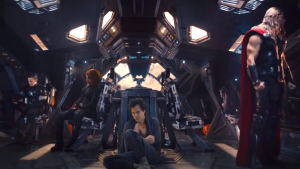 MCU franchise. Said tone was a bit all over the place here, but if properly balanced as it has been in other films, it will be useful in differentiating Marvel’s films from DC’s forthcoming grey and rain-drenched cinematic world which I believe will have much less room for “fun”.
MCU franchise. Said tone was a bit all over the place here, but if properly balanced as it has been in other films, it will be useful in differentiating Marvel’s films from DC’s forthcoming grey and rain-drenched cinematic world which I believe will have much less room for “fun”.
Avengers Age of Ultron‘s opening in particular was a fun, verging on camp romp with it’s over the top action and choreography. The Hulk take-down was properly bonkers. But, ultimately after leaving the movie I found myself perplexed regarding if I really liked the film as a whole.
Distilled down into moments it was certainly entertaining. Most of anything Pietro (Aaron Taylor-Johnsohn) did made me laugh. The Mjolnir fly-by ponder and grab? Funny. Hulk Buster satellite and gear named Veronica (oh poor put-on-a-bus Betty Ross)? Perfect. Ultron targeting Thor because he’s a powerhouse and “annoying”? Gold. Ultron himself? I’m split. When looked at as a larger piece it is not as seamless as the other films as pacing is somewhat…off. The last quarter of the film in particular suffered a sense of discord all over. To hear that there is likely nearly an hour or more worth of scenes on the cutting room floor is not surprising; it felt like it. Additionally, at least in my full theater, there were scenes that were meant to be serious or dynamic but instead the audience laughed, clues to perhaps some misguided writing or directing (or maybe even a bit of both).
It’s not life changing cinema. It’s dynamic, it’s popcorn munching, but Avengers Age of Ultron ultimately got lost in itself.
Rating: C
However, it has a lot of good thematic nuggets in there. Perhaps a “director’s cut” version of the film could remedy a lot of the pacing and meat-y bits that I’m missing.
How could it have improved? Here are 5 tweaks and suggestions that could have made the film even greater.
1. Have a Black Panther Cameo
You have Hulk wreck havoc in Africa in proximity to what we can assume is near Wakanda (but is not in fact Wakanda). Damage is equivalent to a major terrorist attack if not more. A brief video of T’Challa appearing on a screen post Hulk-bust having a news conference angrily berating The Avengers and Tony Stark for leaving so soon and handing everything off (not knowing of the Ultron situation) would have been a nice surprise and also set up any possible tensions that could later blossom during his official “cape” debut.
2. More “Hulk-bust” fall-out // Up Ultron’s Scare Factor.
Spinning off of the above, a more visible global response to the Hulk and Iron-Man battle with faux news (har har har) reports, etc would have been good. More tangible backlash against them as a group might have been interesting as they tr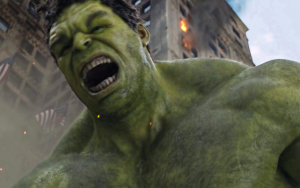 y to hide from Ultron which could be a good foundation for the Civil War atmosphere. Ultron doing his part by further manipulating the media and people to turn against them would have been compelling.
y to hide from Ultron which could be a good foundation for the Civil War atmosphere. Ultron doing his part by further manipulating the media and people to turn against them would have been compelling.
Ultron in general was surprisingly limited and small scale considering he was literally able to infiltrate the internet. He didn’t mess things up enough. While his giant rock pummeling into the earth causing mass extinction is insidious and mega-bad, he felt a lot smaller of a threat than the alien hoard flying out of a portal in the sky or an entire secret government task force being revealed as corrupt Neo-Nazis with killer big brother satellite intentions. Once the rock started to fly, yes that’s scary, but there wasn’t any other sense of pomp or chaos. Ultron’s constant quipping, which made great use of James Spader wasn’t given enough of an outlet. There are hints of Frankenstein’s monster and of course, Pinocchio in his desire to get a new body, to be “real”, but the torment of the former eloquent but murderous literary figure who is alone and aware of his unnatural-ness and alone-ness isn’t fully realized. We get a shade of that, when he tells Natasha he’s lonely, but it’s never quite fully explored from there outside of Vision confronting the last Ultron-bot.
3. More Ladies, More Representation
The lampshade joke regarding the lack of women and way too many men at Tony Stark’s party as quipped by Maria Hill in my theater was met with half laughter and half groans. It comes off as “Oh hey we know it’s really bad demographics wise, see we’re self aware!” and think that’s enough to skid by. It would be different had they had then solved that problem later in the film and perhaps revisited the comment to essentially render it moot.
It’s bad enough Betty Ross was seemingly wiped from Hulk’s canon. I know Hulk is not as popular (I certainly haven’t seen his film) but the glaring omission of her character as an established love interest and a connection to Bruce as someone emotionally invested is a lost opportunity on multiple levels considering her role in the comics. Small cameos from Pepper Pots (Gwyneth Paltrow) and or Jane Foster (Natalie Portman) would have been appreciated as their absences were unnatural given the circumstances (no angry video calls from Pepper?) and further lamp-shaded with awkward banter from their respective boyfriends.
While Agents of Shield features the first leading and supporting Asian women in the MCU universe, Melinda May (Ming-Na Wen) and Skye (Chloe Bennet), Helen Cho marks the first entry of an Asian supporting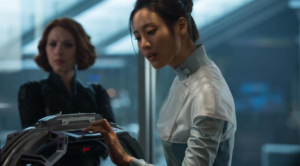 lead in the films. She’s pretty important. Not only does she bear the name of Amadeus Cho’s mom from the comics, but she’s also instrumental (albeit while brainwashed)
lead in the films. She’s pretty important. Not only does she bear the name of Amadeus Cho’s mom from the comics, but she’s also instrumental (albeit while brainwashed) in the creation of Vision ( (Paul Bettany). However, I wish she had been given a few more scenes. I also wish, and this is entirely self-serving, that she was the MCU’s Wasp, following the “Ultimate” universe version, adding two possible women of color to the roster of Avengers caped main players in this film (Wanda and Helen).
The problem with Helen Cho in Age of Ultron is that she just…vanishes. The last we see of her is after she was throttled for sabotaging things post-mind control. The Avengers come to her aid, she tells them where to go, and she is just gone from thereon out. Helen is, from what I can recall, not shown again until the end, when all is well and she’s working at the new Avengers headquarters. One of the people I went with, in which our screening was her second viewing, was flabbergasted after noticing Cho at the end and realized she had actually survived the film; she thought she died the first time she saw it. Where did she go from there? She helped create Vision. She’s just like Tony Stark in that she had a hand in creating an entity unique to itself.How did she feel about that? It’s a Dr. Frankenstein moment fueled by Thor thunder. Shouldn’t that have been explored more?
4. Make the small stone church featured a small synagogue.
Marvel has gotten a lot of flack for not casting a Jewish, Roma, or Jewish-Roma actress for Scarlet Witch (Elizabeth Olsen) nor making mention of the twins ethnoreligious backgrounds in the movie. Since Quicksilver’s actor Aaron 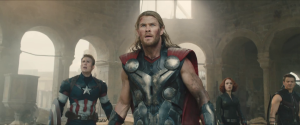 Taylor-Johnsohn is Jewish (many reviewers are scathingly erasing this fact and calling him gentile) an easy fix aside from actually casting an Eastern European Jewish, Roma, or Jewish-Roma actress for Wanda, they could have, at the least, made the church featured in Age of Ultron to be an old small synagogue instead. A simple comment from one of the twins while inside the building for the first time could then infer their backgrounds. It would have been an easy swap and a subtle way to add diversity to the roster even without access to Magneto.
Taylor-Johnsohn is Jewish (many reviewers are scathingly erasing this fact and calling him gentile) an easy fix aside from actually casting an Eastern European Jewish, Roma, or Jewish-Roma actress for Wanda, they could have, at the least, made the church featured in Age of Ultron to be an old small synagogue instead. A simple comment from one of the twins while inside the building for the first time could then infer their backgrounds. It would have been an easy swap and a subtle way to add diversity to the roster even without access to Magneto.
5. Give the big finale (hey, how about the whole movie) to Scarlet Witch
Ultron states he has no strings to hold him down, but the real plot of the film are the strings that bind the Maximoff twins becoming undone. I think they should have opened AoU showing Wanda and Pietro’s experience in the war in their country and seeing STARK on the weapons. Then cut to the Avengers’ siege on the stronghold during the current day as they had it.
Tony also shouldn’t have been the one to deliver the final blow to the giant rock/city. Sure they gave Scarlet Witch the big “heart” ripping out scene, but the film would have reached a pretty iconic moment had they given her the 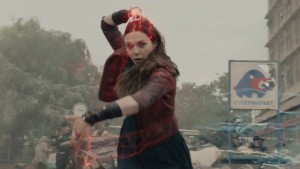 ending entirely. They did a mini-outburst showing what she can do powers-wise when upset, but that wasn’t enough.
ending entirely. They did a mini-outburst showing what she can do powers-wise when upset, but that wasn’t enough.
Scarlet Witch is supposed to be powerful. Very. Powerful. Imagine, Tony’s beam fails and all seems lost, but then Wanda, in a fit of rage and emotion (in response to what occurs towards the end) finally shows the extent of her abilities and wanting so bad to find justice, engulfs the entire city with her powers. She then literally STOPS the city from impact and sets it down back to where it was, or crumbles and tears it apart herself. Given Ultron’s Pinocchio obsession, the theme of puppets is also fitting for Wanda. She had been used as a puppet for so long first by Hydra as a guinea pig and then by Ultron and for her to have a “There are no strings on me” moment would have been such a great counter to Ultron’s own assertions of the line (which are in my opinion a false one, as he is following Tony’s zealous but flawed programming thus indeed has a string), since Wanda would in comparison truly have been string-free at that point, and then saves the city by controlling it herself, the way a puppeteer controls a marionette; the puppet becomes the puppeteer.
Final Verdict
The film is an ambitious one and juggles a lot of characters so it’s not surprising things got pushed to the side and it got disorganized and tripped over itself in the process. However, it sets up some good things; the new Avengers roster consisting of Black Widow, Scarlet Witch, War Machine (Don Cheadle), Falcon (Anthony Mackie), Captain America (Chris Evans) and the cyborg Vision is more diverse than the prior team.I think ultimately the best thing about Age of Ultron is the discussion it’s causing. Its making people talk, and talk a lot. Our pop-culture won’t change otherwise. I think that in itself is pretty…super. Talk with us. What did you think?
Max Eber
Staff Writer
@maxlikescomics


